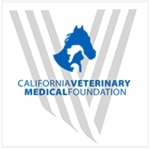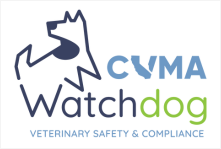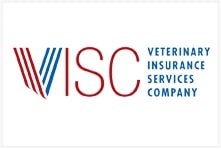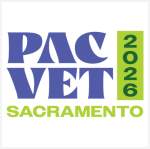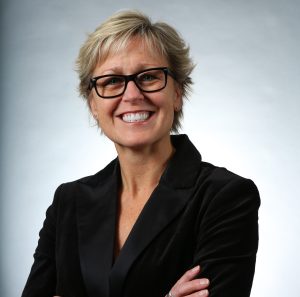This article was originally printed in the January/February 2025 issue of the California Veterinarian magazine.
In the summer and fall of 2024, I surveyed over 500 veterinary professionals from all corners of veterinary medicine on the topic of allyship, inclusion, and leadership within their workplace. This article focuses on some of the responses to this survey, exploring what allyship and inclusion mean in the veterinary profession,
and how leadership can support team members from all backgrounds.
Workplace Allyship
Allyship in its most basic sense is when someone from a non-marginalized or overrepresented group uses their privilege or advantage to advocate for someone from a marginalized, underrepresented, or historically excluded group.
Allyship originates from a place of solidarity not from identity and is always active. When asked in the recent survey to describe an example of personally witnessed workplace allyship, the following are some of the responses:
- Colleagues expressing concern over the deterioration of LGBTQ+ rights over the last few years
- 40% of sponsors and leads of associate resource groups being allies (rather than members of the marginalized, underrepresented, or historically excluded group themselves)
- Participating in their local Pride weekend by hosting a booth and marching in the parade
- Leaders from advantaged backgrounds actively sponsoring associates who are members of disadvantaged groups to support rising leadership journeys
- Employer recognizing Juneteenth before the holiday became federally recognized
- Speaking up and asking for change when meeting leaders do not create a welcoming environment
- Peers and colleagues holding each other accountable for having more inclusive and accommodating language
- Supervisor allowing team members to discuss disabilities and helping accommodate their needs
- Defending the work of others when they are not present
- Celebrating all culturally significant and requested holidays
Workplace Inclusion
Inclusion refers to behaviors and social norms that ensure people feel welcome. If everyone who comes in contact with the workplace feels that they belong, then the workplace is inclusive. The following are some of the responses to the survey question, “In what way is your workplace inclusive?”:
- Associate resource groups are invited to review employee benefits each year and make suggestions
- Veterinary social workers are on staff and available to speak with team members and clients as needed
- Team members are invited to share their cultural celebrations during daily huddles
- Associates who speak languages other than English may wear a badge stating those languages
- Intentionally including inclusive and diverse imagery and verbiage
- Ensuring that physical spaces allow for all mobility options
- Utilization of business resource groups to organize and improve the ways team members feel welcomed and included
- Weekly team meetings to review projects while allowing space for anyone to contribute an idea or join a project if interested
- Encouraging team members to pronounce colleagues’ names correctly
Allyship, Inclusion, and Leadership
There are hundreds of ways to define “leadership.” For me, leadership is about removing barriers and teeing up resources. Another favorite definition is that leadership is about improving the lives of others. Regardless of their role, career stage, and workplace setting, every team member can choose to be a leader. The following are a few survey responses to a question of how allyship, inclusion, and leadership are interrelated:
- Leadership includes adapting, flexing, and including people with different talents, backgrounds, perspectives, and ethnicities
- Allyship and inclusion are cultural components that help develop leaders
- With allyship and inclusion, we can develop a more diverse slate of leaders, which in turn can help to promote allyship and inclusion
- Leadership is about moving people towards a common goal. To do this, leaders must bring out the best in people to unlock their creativity and tap into their unique perspectives
- In order to be their best selves and best contributors, people must feel safe, wanted, and heard. Therefore, allyship, inclusion, and leadership are all interrelated
- It takes intentional leadership and willingness to confront old norms and challenge the status quo to truly achieve an inclusive workplace
- In order to achieve the best, most successful community, all people need to be supported
- Allyship and inclusion do not happen on their own; these behaviors tend to be most apparent in environments where respect is rewarded and honored
- Inclusive leaders foster environments where individuals feel safe to be their authentic selves and actively contribute
- Leaders must be open to learning from diverse perspectives and be willing to take action when they encounter inequities in the workplace
- Leaders model allyship by actively supporting and standing up for the lived experiences of others, thus creating a culture of inclusion
- When leaders focus on allyship and inclusion, they help build trust and teamwork while also encouraging new ideas
Does Your Workplace Have an Inclusivity Problem?
Consider the following workplace inclusivity assessment questions in the context of your current workplace. If you are currently in a career transition, consider the questions as they relate to a previous work environment. Jot down a yes or no for each. If you do not know the answer, assume it to be a no.
- Is there a publicly posted anti-harassment and non- discrimination policy?
- Have all members of the current team been trained in workplace anti-harassment and non- discrimination policies?
- Do all staff members know what to do if they hear a statement or see an action that does not align with workplace policies?
- Is periodic training offered for all team members, so that it is clear which types of behaviors are acceptable and which are not?
- Does the workplace celebrate diverse holidays and months of focus?
- Do the pictures on the walls mirror a diverse society?
- Do the pictures and images on the website and social media channels mirror a diverse society?
- Does the workplace have a gender- neutral restroom?
- Are client materials offered in languages other than English?
- Are team members encouraged to proactively share all languages in which they can communicate?
- Do client forms contain gender-neutral and inclusive wording (e.g., spouse/ partner instead of husband/wife)?
- Is including pronouns on name badges and email signatures offered?
- Is feedback viewed as a gift by all team members?
- Has the team reviewed and signed their support for PrideVMC’s Gender Identity Bill of Rights, which establishes a basic foundation for eliminating discriminatory practices against transgender, non-binary, and gender non-conforming individuals in the veterinary profession?
- Does staff recruitment occur via a diverse variety of outlets (e.g., Black Chamber of Commerce, Latinx Chamber of Commerce, etc.)?
- Does the workplace publicly post any symbols of inclusion, such as the Pride flag, which signifies a LGBTQ+ friendly workplace?
- Is mentoring offered to all team members?
- Are exit interviews offered to all employees as they leave the workplace?
- Are stay interviews periodically offered to all team members?
Now count up all of your “no” responses. If you answered no to four or more questions, then your workplace has some work to do!
Next Steps
The next steps are up to you. Perhaps you will share the workplace inclusivity assessment questions with your team or dive deeper into one of the provided resources. Wherever you are on your allyship and inclusivity journey, be sure to celebrate your progress and ask for help when needed!
About Dr. Mia Cary
Dr. Mia Cary (she/her) is a 1999 graduate of the University of Florida College of Veterinary Medicine. She has a personal and professional purpose of activating others to thrive, which she achieves through speaking, meeting facilitation, association leadership, coaching, and customized consulting projects. Her professional experience includes executive leadership and education roles at the AVMA, North American Veterinary Community (NAVC), Boehringer Ingelheim, and Novartis Animal Health. Dr. Cary currently serves as CEO and Change Agent for Cary Consulting, CEO for the Pride Veterinary Medical Community (PrideVMC), serves on the board of advisors for Dean Ruby Perry at the Tuskegee University College of Veterinary Medicine, is a Past President of the American Association of Industry Veterinarians (AAIV), and is a certified QPR Gatekeeper Training Instructor.

